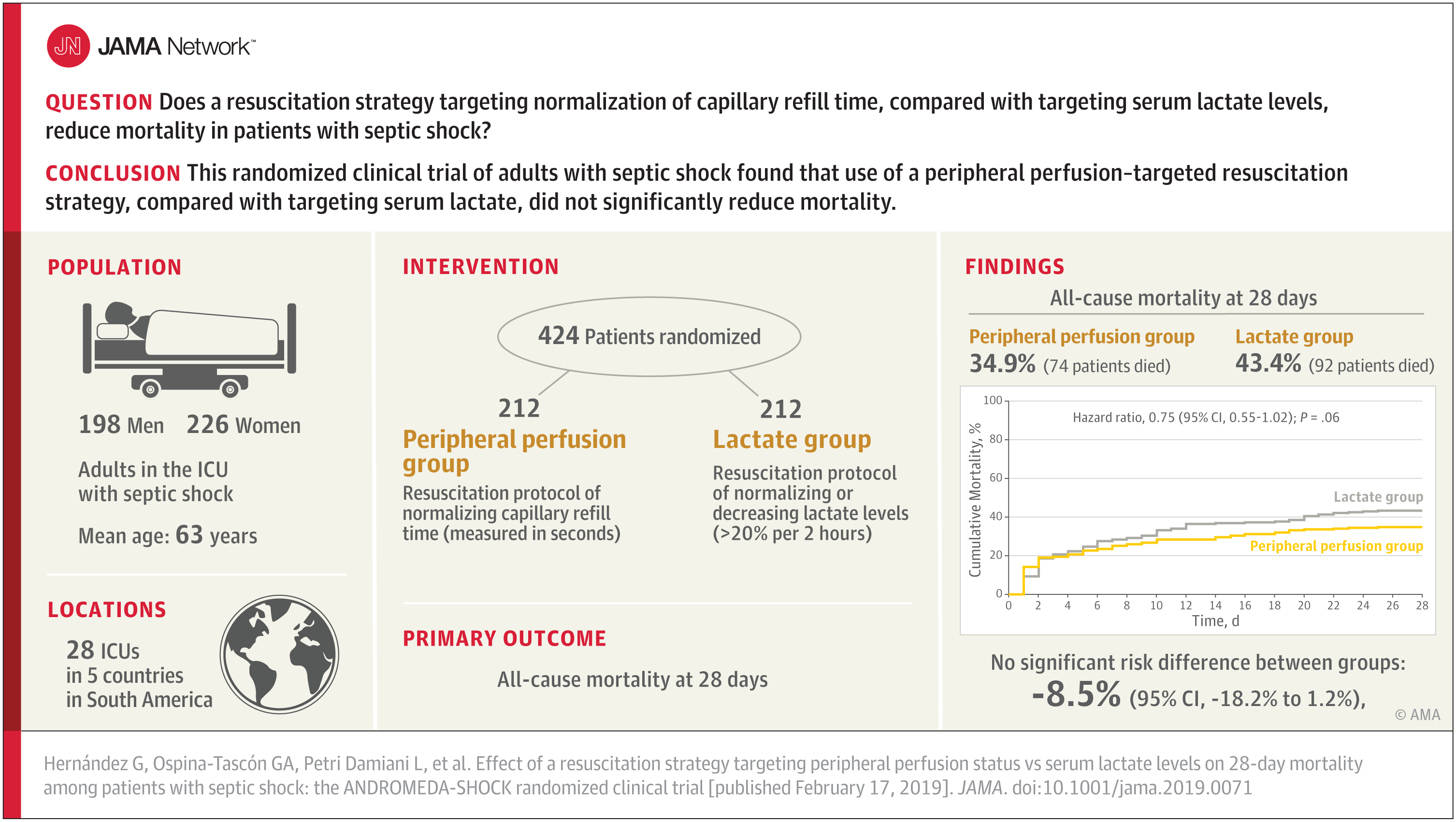- Joined
- Jul 12, 2004
- Messages
- 5,635
- Reaction score
- 5,371
I've been thinking about this a lot over the past several months.
Where I work, if a patient has an infection or potentially an infection, it's almost reflexive to order a lactate. This is irrespective of the patient history, vital signs, or physical exam.
For instance, we (meaning the ER docs) get lactates on the following
- routine leg cellulitis of a middle aged patient with no PMH and normal vitals signs.
- cough with temp 99.6, everything else on H&P is OK
- a butt abscess and HR 110, BP is 140/90.
we get lactates all the time. I think it's terrible
What good is an elevated lactate if someone's blood pressure is normal or high?
Is there a belief that the patient with a wound infection and a BP of 150/90, who has a lactate of 3.6, will benefit from getting 30 ml / kg? Or even any fluid? Is the idea that we should perfuse the organs even more than what a MAP of 100 is already doing?
My understanding of CC medicine and treatment of true septic shock is you give fluids and vasopressors until you have a normalish MAP and maybe optimize a few other things like UOP, CVP, pO2. Then, after that...if the lactate is still elevated and not coming down, there isn't much else to do. Perhaps there is microcirculatory dysfunction at the organ cellular level which cannot be fixed. You can perfuse organs all you want, but if there is organ dysfunction at a cellular level in the capillaries, then well I guess you just have to wait for the body to heal.
I get so many patients with normal vital signs, or maybe a HR 108 and BP 145/80, who have lactates between 2-4. Maybe they have a leukocytosis, maybe not. But it doesn't matter...
Where I work, if a patient has an infection or potentially an infection, it's almost reflexive to order a lactate. This is irrespective of the patient history, vital signs, or physical exam.
For instance, we (meaning the ER docs) get lactates on the following
- routine leg cellulitis of a middle aged patient with no PMH and normal vitals signs.
- cough with temp 99.6, everything else on H&P is OK
- a butt abscess and HR 110, BP is 140/90.
we get lactates all the time. I think it's terrible
What good is an elevated lactate if someone's blood pressure is normal or high?
Is there a belief that the patient with a wound infection and a BP of 150/90, who has a lactate of 3.6, will benefit from getting 30 ml / kg? Or even any fluid? Is the idea that we should perfuse the organs even more than what a MAP of 100 is already doing?
My understanding of CC medicine and treatment of true septic shock is you give fluids and vasopressors until you have a normalish MAP and maybe optimize a few other things like UOP, CVP, pO2. Then, after that...if the lactate is still elevated and not coming down, there isn't much else to do. Perhaps there is microcirculatory dysfunction at the organ cellular level which cannot be fixed. You can perfuse organs all you want, but if there is organ dysfunction at a cellular level in the capillaries, then well I guess you just have to wait for the body to heal.
I get so many patients with normal vital signs, or maybe a HR 108 and BP 145/80, who have lactates between 2-4. Maybe they have a leukocytosis, maybe not. But it doesn't matter...

